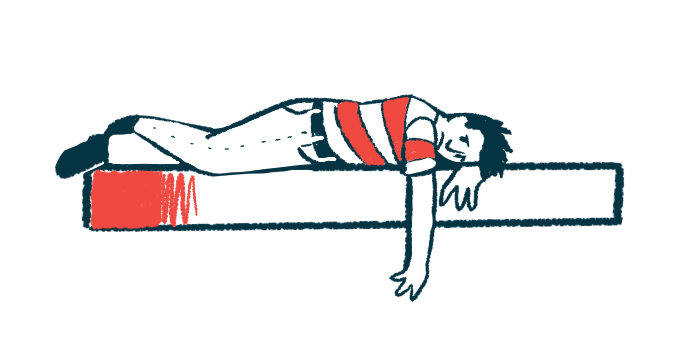Managing Depression, Fatigue May Boost Quality of Life

People with Charcot-Marie-Tooth disease type 1A (CMT1A) have reduced quality of life, particularly in physical domains, a study from Serbia shows.
Disease severity, depression, and fatigue are the main predictors of worse quality of life in this patient population.
Given that there is still no treatment for this disease, managing depression and fatigue may help improve the quality of life of CMT1A patients, the researchers noted.
The study, “Physical and Mental Aspects of Quality of Life in Patients With Charcot-Marie-Tooth Disease Type 1A,” was published in the journal Frontiers in Neurology.
Charcot-Marie-Tooth disease (CMT) is a group of inherited progressive disorders that affect the peripheral nervous system, which controls movement and sensation in the limbs. No therapy has been approved for any form of CMT.
CMT1A, caused by a duplication of the PMP22 gene, is the most common subtype of CMT, accounting for about 50% of all cases. It is characterized by early-onset, slowly progressive muscle weakness of the lower legs and hands, and reduced sensation later in life, leading to significant disability.
Previous studies showed that CMT patients have reduced quality of life, and that leg muscle weakness, walking difficulties, and fatigue are the main predictors of reduced quality of life in these patients.
While CMT’s symptoms can vary greatly across disease subtypes and underlying mutation, most of these quality-of-life studies did not focus on one CMT subtype alone.
Now, a team of researchers in Serbia evaluated the quality of life of 45 patients (27 females and 18 males) with CMT1A and potential associations with clinical and sociodemographic features, especially those potentially amenable to treatment or prevention.
This study was part of the Longitudinal Charcot-Marie-Tooth Neuropathy Study of Serbia (LoCh-NeSS) project, which collected data on CMT patients who have been diagnosed and/or followed at the University Clinical Center of Serbia’s Neurology Clinic.
Patients were assessed from 2018 to 2019 and at the time, they had a mean age of 50.4 years. They had been living with the disease for a median of 22 years and experienced a diagnostic delay of a median of 15 years.
More than half (53.3%) showed juvenile disease onset, with symptoms starting before the age of 20, while 46.7% developed symptoms after that (adult onset).
Quality of life was assessed with the validated, self-reported 36-Item Short Form Health Survey (SF‐36), which comprises eight domains of physical and mental health: physical functioning; bodily pain; role limitations due to physical problems; energy/fatigue; social functioning; role limitations due to emotional problems; mental health; and general health.
Disease severity, limb muscle strength, functional disability, depression, and fatigue also were assessed with validated measures.
Results showed that CMT1A patients had reduced quality of life in all SF-36 domains, and most particularly in its general health and physical domains. Mental health and social functioning were the least affected domains.
When compared with the general population in Croatia (given the lack of data for the Serbian general population), these patients scored lower in all SF-36 physical domains, but better in two mental domains. The latter could be due to the fact that Croatian values concerned a population in transitional, post-war Croatia, which could negatively affect mental scores.
Notably, people with CMT1A had similar or reduced quality of life relative to Serbian patients with other chronic neuromuscular diseases.
Worse disease severity, greater muscle weakness, more severe functional disability, the use of walking aids, depression, and fatigue were associated significantly with worse qualify of life in both physical and mental domains among CMT1A patients.
Also, older age, longer disease duration, and the presence of tremors were associated significantly with reduced physical-related quality of life, but not with lower scores in SF-36’s mental domains.
These associations were largely consistent with those from previous studies in CMT and CMT1A patients.
Moreover, disease severity, depression, and fatigue were the main predictors of worse quality of life in these patients.
These findings highlight that people with CMT1A have a reduced quality of life and pointed to tremors (affecting 82.2% of patients), fatigue (55.6%), and depression (28.9%) as influencing factors amenable to treatment.
As such, management of these clinical features “could be an important tool for improving QoL [quality of life] in these patients,” for whom there are no approved treatments, the researchers wrote.
Future research also should focus on the impact of the pandemic on CMT1A patients’ quality of life and on associations “between impairment, disability, [quality of life], and disease biomarkers,” the team wrote.







